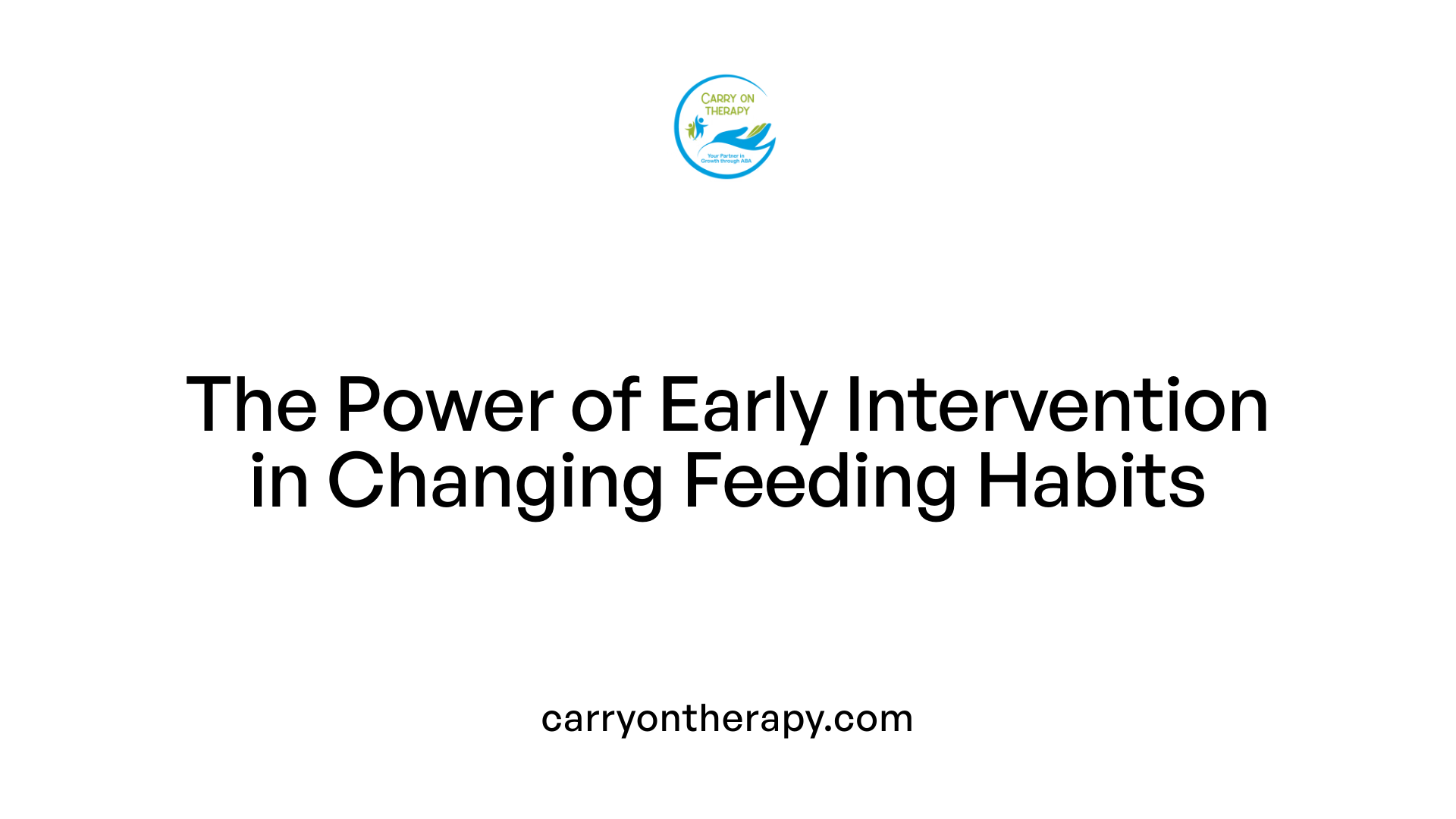Understanding Food Selectivity in Autism
Feeding challenges are a significant concern for children with autism spectrum disorder (ASD), with up to 90% experiencing some form of difficulty. Among these, food selectivity—where children prefer very limited types of food based on texture, color, or other sensory features—affects nearly 70%. Such challenges not only impact nutrition but also family dynamics and overall wellbeing. This article examines the role of feeding therapy, particularly those grounded in applied behavior analysis (ABA), in reducing food selectivity and fostering healthier eating behaviors in children with autism.
Prevalence and Impact of Feeding Problems in Autism

How common are feeding problems among children with autism?
Feeding difficulties are extremely widespread in children with autism, affecting as many as 90% of this group. This high prevalence highlights feeding challenges as a major concern for caregivers and healthcare providers working with autistic children.
What feeding difficulties are typically seen in these children?
Common feeding issues include strong food selectivity where children may accept only certain foods, often based on texture, color, or type. Many children refuse large ranges of foods and may display negative behaviors such as aggression or disruptive actions during meals. There is also an increased risk of choking and other related challenges.
What are the consequences if these feeding problems go untreated?
If feeding difficulties are not addressed, children can suffer poor nutrition and growth failure. Moreover, ongoing feeding problems can lead to increased vulnerability to illnesses and may escalate to the point where medical interventions like feeding tubes become necessary. The cumulative impact underscores the importance of early and effective treatment to safeguard health and development.
Applied Behavior Analysis (ABA) in Addressing Feeding Challenges

How is applied behavior analysis used to treat feeding difficulties in children with autism?
Applied Behavior Analysis (ABA) is a structured approach that uses principles such as reinforcement, extinction, and punishment to improve feeding behaviors in children with autism. Through functional assessments, applied behavior analysts identify the causes of feeding problems. This information guides the creation of Behavior Intervention Plans (BIPs) that modify antecedents, teach new skills, and change the consequences of behaviors. ABA techniques focus on increasing appropriate eating behaviors, improving chewing and swallowing, reducing disruptive mealtime behaviors, and teaching self-feeding.
Which ABA techniques are effective for improving feeding behaviors?
Several ABA techniques have shown success in reducing food selectivity and feeding difficulties. These include:
- Escape extinction: Preventing avoidance behaviors by not allowing the removal of non-preferred foods until a bite is taken.
- Differential reinforcement: Rewarding appropriate eating behaviors while withholding attention or rewards for problem behaviors.
- Stimulus fading: Gradually introducing new foods or textures alongside familiar ones to increase acceptance.
- Re-presentation of expelled bites: Offering expelled food again rather than immediately removing it, encouraging acceptance.
- Non-contingent reinforcement: Providing reinforcement independent of feeding behaviors to reduce problem behaviors.
These techniques work synergistically to encourage children to consume a wider variety of foods and reduce disruptive behaviors during meals.
Why is early intervention important in feeding therapy for children with autism?
Early intervention is critical to prevent feeding issues from becoming deeply ingrained. Addressing difficulties promptly improves the chances of successful treatment and better nutritional outcomes. Establishing consistent routines during mealtimes is particularly beneficial for children with autism, as they thrive on predictability. Early behavioral interventions can effectively increase food acceptance, reduce refusal and negative vocalizations, and lay the foundation for healthy eating habits.
| Aspect | Description | Impact on Feeding Therapy |
|---|---|---|
| ABA Principles | Reinforcement, extinction, punishment | Increase positive eating behaviors, reduce problems |
| ABA Techniques | Escape extinction, differential reinforcement, stimulus fading, re-presentation, non-contingent reinforcement | Expand food variety, decrease refusals and disruptions |
| Functional Assessment | Identifies behavioral functions causing feeding issues | Tailors individualized treatment plans |
| Early Intervention & Routine | Addressing feeding early and establishing routines | Improves acceptance, reduces problem behaviors |
Functional Assessment and Individualized Feeding Interventions

What is the role of functional analysis in feeding therapy for autism?
Functional analysis plays a crucial role in feeding therapy by identifying the specific behavioral functions behind inappropriate mealtime behaviors in children with autism. This understanding allows clinicians to tailor individualized treatments that directly address the cause of feeding challenges rather than just the symptoms. By pinpointing whether behaviors serve as escape from demands, attention seeking, or sensory preferences, functional analysis guides targeted interventions that improve feeding outcomes.
Can caregivers be involved in functional assessments?
Caregivers can indeed be actively involved in the functional assessment process. They can be trained to perform functional analyses of feeding behaviors in the home setting with high integrity. This involvement not only enriches the data collected across natural environments but also empowers caregivers with the skills to support consistent behavior management at mealtime. Engaging caregivers ensures that interventions continue beyond clinical sessions, leading to better generalization and maintenance of progress.
How are Behavior Intervention Plans formulated for feeding difficulties?
Behavior Intervention Plans (BIPs) for feeding difficulties are designed by applied behavior analysts using detailed assessment data obtained from functional analysis. These plans modify antecedent conditions to reduce triggers for problem behaviors, teach new feeding skills through prompting and reinforcement, and adjust consequences to strengthen appropriate eating behaviors while decreasing refusals or disruptive behaviors. Common ABA techniques incorporated into BIPs include positive reinforcement, escape extinction, differential reinforcement, and stimulus fading. Together, these strategies address individualized needs and promote successful mealtime behaviors.
Integrative and Emerging Approaches in Feeding Therapy

How do interdisciplinary feeding programs aid children with autism?
Interdisciplinary feeding programs merge applied behavior analysis (ABA) principles with oral motor therapies to address feeding difficulties holistically. These combined approaches help increase food acceptance among children with autism while simultaneously reducing food refusal and negative vocalizations during mealtimes. By tackling both behavioral and physical aspects of feeding, these programs improve overall eating behaviors more effectively than single-modality interventions.
What insights can behavioral studies in non-autistic children provide?
Behavioral studies with non-autistic children have demonstrated that interventions such as escape extinction—a procedure where the child's attempts to avoid eating are not permitted—and the re-presentation of previously expelled bites can significantly improve feeding behaviors. These findings offer valuable strategies that can be adapted for children with autism, providing evidence-based methods to reduce feeding problems and expand dietary variety.
What are the future research directions in feeding therapy?
Future research in feeding therapy will focus on better understanding the functions underlying food selectivity in children with autism. Additional studies aim to explore how specific food properties, like texture and taste, influence feeding behaviors. Moreover, the potential to harness conditioned food preferences and aversions holds promise for developing innovative treatment approaches that could personalize and enhance intervention efficacy.
These advancing interdisciplinary strategies and ongoing research efforts highlight a progressive shift toward more tailored and effective feeding interventions for children with autism.
| Topic | Description | Benefit for Children with Autism |
|---|---|---|
| Interdisciplinary Feeding Programs | Combine ABA with oral motor therapies | Improved food acceptance; reduced refusal and vocalizations |
| Behavioral Studies in Non-Autistic Children | Use escape extinction and re-presentation of expelled bites | Provide applicable techniques to improve feeding behaviors |
| Emerging Research Directions | Investigate food selectivity functions, food properties, and conditioning of food preferences/aversions | Potential to create personalized, effective feeding therapies |
The Critical Importance of Addressing Feeding Issues Holistically

Why is addressing feeding problems in autism crucial?
Feeding problems are extremely common among children with autism, affecting up to 90%. Effective feeding therapy is vital because it supports better overall health, proper nutrition, and healthy growth. Moreover, it reduces mealtime stress and improves mealtime behaviors, which benefits both children and their families. By increasing appropriate feeding behaviors and decreasing problematic ones, therapy can foster more positive mealtime experiences.
What can happen if feeding disorders remain untreated?
If feeding issues are not addressed, serious consequences can arise. Persistent feeding difficulties may result in developmental delays, nutritional deficiencies, and poor growth. Such untreated problems can also lower a child’s quality of life and increase their vulnerability to illnesses. Food refusal and extreme selectivity limit nutrient intake, potentially leading to long-term health challenges.
How important is collaboration in feeding therapy?
Collaboration among professionals, caregivers, and interdisciplinary teams is essential for effective treatment. Behavior analysts, oral motor therapists, nutritionists, and caregivers work together to develop comprehensive, individualized plans. This cooperative approach ensures the therapy matches each child's unique feeding challenges and supports caregivers in managing behaviors at home. Training caregivers in functional analysis and behavioral techniques promotes consistency and greater treatment success.
Addressing feeding problems holistically combining behavioral interventions with medical and therapeutic supports is paramount for improving health outcomes and quality of life in children with autism.
Feeding Therapy: A Pathway to Healthier Eating and Living
Feeding difficulties, particularly food selectivity, are prevalent and challenging aspects of autism that require specialized and evidence-based intervention. Applied behavior analysis provides a robust framework for addressing these challenges through individualized, functional assessment-based feeding therapies. When combined with interdisciplinary support and caregiver engagement, feeding therapy not only improves dietary variety and nutritional intake but also enhances overall quality of life for children with autism and their families. Continued research and innovation in this field will further refine and expand therapeutic options, underscoring the vital role feeding therapy holds in the health and development of children on the autism spectrum.
References
You have to Start to be Great!






